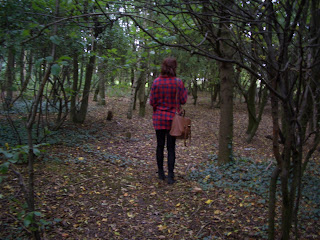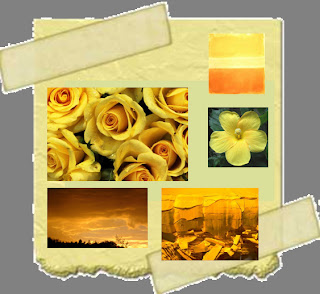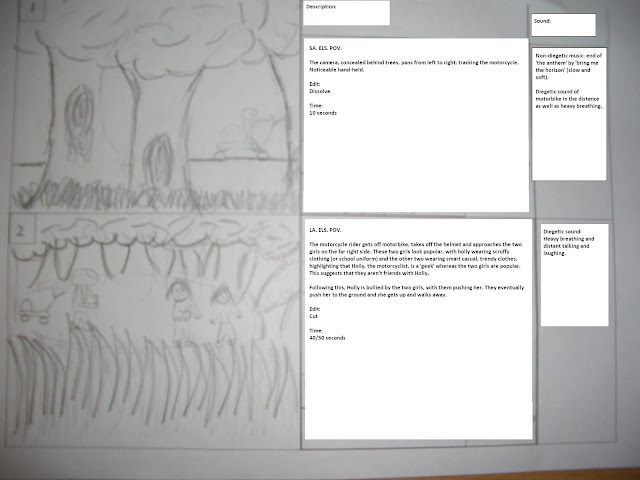‘THE HUNT’
By Arron Bass
SCENE 1
FADE IN
HOLLY is walking through a forest, alone. She is on her phone.
HOLLY
No mum, I’ll be fine! I’m just taking
a shortcut; I won’t be long. Right,
stop worrying, I’m on my way now… okay?
Bye
SCENE 2
CUT
HOLLY, after walking through the forest for a while, sees some keys, which she appears to recognise.
HOLLY
What, my keys?!
SCENE 3
DISSOLVE IN
INT. BEDROOM. DAY.
HOLLY, in a flashback sequence, gives some keys to her boyfriend, JOHN.
HOLLY
…I got you some keys, so now you can
let yourself in
JOHN
Oh… thanks!
SCENE 4
DISSOLVE IN
Holly runs through the forest in a panic, getting disorientated and tired. She takes a rest beside a tree, were she is again startled by a loud noise. It is John, who is stalking her, but she is yet to find out. She runs.
SCENE 5
CUT
EXT. BASE OF LARGE TREE. DAY.
Holly stumbles upon a shirt which, again, she seems to recognise.
SCENE 6
DISSOLVE IN
INT. BEDROOM. DAY.
HOLLY and JOHN are in the bedroom talking and John has got a gift for Holly.
JOHN
And whilst I was there I got
you a gift.
HOLLY
Yeah? …oh wow!
JOHN
So do you like it?
HOLLY
Yeah I really love it, thank you.
SCENE 7
DISSOLVE IN
Holly, again startled by a noise, feeling like she’s being followed, runs, losing the forest track. She finds it again.
JOHN ENTERS. And Holly, noticing him, comes to a halt.
SCENE 8
DISSOLVE IN
INT. LIVING ROOM. DAY.
HOLLY is in the process of breaking up with JOHN. He takes it badly.
JOHN
Well why does it have to be over?
HOLLY
I just… I can’t do it anymore. It’s not
Working, I’m sorry.
HOLLY tries to comfort John, but is pushed away.
HOLLY
Oh forget it, I’m leaving now.
HOLLY tries to leave but JOHN stops her.
JOHN
You’re not going anywhere!
HOLLY
What?
John throws HOLLY to the couch and attacks her.
HOLLY
John… NO!
SCENE 9
DISSOLVE IN
Holly has given up running from JOHN, as she is exhausted and traumatised at the reappearance of her controlling, mentally unstable ex-boyfriend.
JOHN ENTERS.
JOHN
Alright. Didn’t think I’d get you, did you?
I take it you knew it was me… setting up
All the traps. Making you remember.
JOHN, holding a baseball bat, looks menacingly towards Holly.
JOHN
You hurt me! …and now I’m going to kill you.
John attacks HOLLY with the baseball bat.
HOLLY
John… JOHN! NO! ARGHHH!























































